Building a Suspended Ceiling Cost
Last updated 3rd September, 2024
Suspended ceilings cost between £16 and £60 per m2, but there are many factors that can change the cost.
In this article, we’ll be looking into the cost of suspended ceilings, considering different sizes, materials, and whether its a retrofit or brand-new construction. We’ll walk you through the steps your contractor is likely to take and share with you the best ways to find a professional, capable trader to carry out the work for you.
Let’s get started!
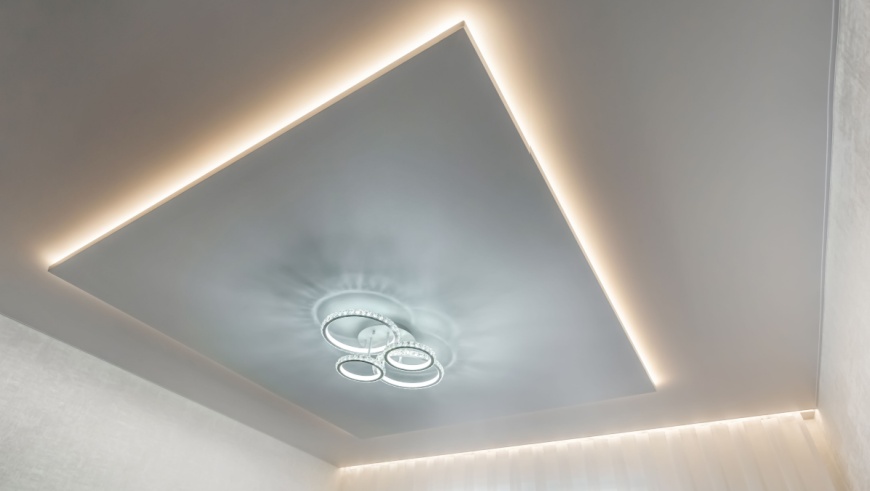
Table of Contents
How Much Does It Cost to Build a Suspended Ceiling?
What is a suspended ceiling?
Suspended ceilings, also known as false ceilings and dropped ceilings, are essentially “extra” ceilings fitted below an existing ceiling. While their initial purpose may seem confusing, they are useful to cover up a multitude of things–from unsightly pipes and wires, to being useful spots to hang lights from or fit spotlights to.
Beyond their cover-up features, suspended ceilings can improve your home’s acoustics and energy efficiency by adding extra insulation. Available in a variety of materials and designs, the choice is practically endless when it comes to finding the best solution for your home.
Suspended ceilings cost between £16 and £60 per m2, depending on your chosen material and design complexity, totalling around £1,500 for a typical 10-foot by 12-foot area. They are commonly seen in homes, offices, and commercial settings.
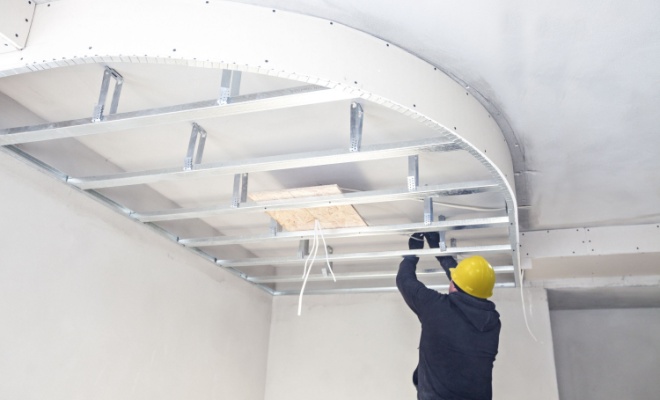
In commercial spaces and offices, you’re more likely to see suspended ceiling tiles. These are installed below the main structural ceiling via a grid framework, where the individual false ceiling tiles can be dropped into place and removed as desired. This offers great flexibility for commercial installations where lighting setups or displays may change on a routine basis.
- Acoustic ceiling tiles: As the name would suggest, acoustic ceiling tiles are great at enhancing a room’s sound quality by absorbing and reducing noise levels. These are commonly seen in spaces where sound control is important, such as offices and schools.
- Plastic ceiling tiles: An affordable option for those on a tight budget. They are lightweight, easy to install and resistant to moisture, making them a great choice for bathrooms, kitchens and basements.
- Tin ceiling tiles: Tin gives a completely different look to plastic ceiling tiles, giving a “rustic” charm to a space with 19th- and 20th-century styles. They are not great sound absorbers, so they wouldn’t be useful in commercial, high-volume areas, and they are generally more expensive than other materials, but they can give smaller spaces in residential properties a vintage charm.
- Cork ceiling tiles: An eco-friendly option, cork ceiling tiles are water-resistant and absorb sound well, making them a good all-rounder.
As you’d expect, the cost of suspended ceiling installation will differ depending on certain factors:
- The suspended ceiling size and height: The larger the size, the higher the price–and vice versa. The higher the ceiling, the higher the labour charge.
- The choice of material: More premium materials–such as metal or those with special acoustic benefits–will cost more than standard plastic tiles. You will always pay more for designer brands as opposed to own-brand variants.
- Number of rooms: Whether you have a suspended ceiling fitted in just one room or in a few will raise or lower your total project fee.
- Retrofit or new construction: If you’re having a suspended ceiling incorporated into a new construction, you can benefit from advanced planning and a simplified installation, whereas a retrofit installation will require more work due to demolition, preparation, and working around existing structures/obstacles. Retrofits are generally more expensive than new constructions.
- Added features: The cost of adding specialist lighting, sprinklers, or sound systems to the suspended ceiling will rise–more on this in our additional costs section.
Suspended Ceiling Installation Prices
Now that we understand a little more about the different types of suspended ceilings, let’s take a look at some costs to give you an idea of your project’s budget.
| Job type | Estimated price per m2 |
|---|---|
| Entry-level suspended ceiling | £16 to £20 per m2 |
| Mid-range suspended ceiling | £22 to £35 per m2 |
| High-end suspended ceiling | £40 to £60 per m2 |
| Insulation installation | £5 to £8 per m2 |
First, looking at prices per m2, an entry-level suspended ceiling–most likely made of plastic–will cost between £16 and £20 per m2. A mid-range plastic or cork suspended ceiling will cost between £22 and £35 per m2, while a high-end suspended ceiling–in tin or high-end plastic options–will cost between £40 and £60 per m2.
If you add insulation as part of your installation, it will cost an extra £5 to £8 per m2.
Next, let’s look at some individual ceiling tile costs:
| Ceiling tile type | Estimated cost per tile |
|---|---|
| Entry-level plastic ceiling tile | £3.80 |
| Mid-range plastic ceiling tile | £10 |
| High-end plastic ceiling tile | £18 |
| Entry-level metal ceiling tile | £12 |
| Mid-range metal ceiling tile | £22 |
| High-end metal ceiling tile | £30 |
An entry-level plastic ceiling tile costs as little as £3.80 per tile, giving you a great budget-friendly option. For something mid-range, the cost will rise to around £10 per tile, while the high-end plastic ceiling tiles can command £18+ per tile.
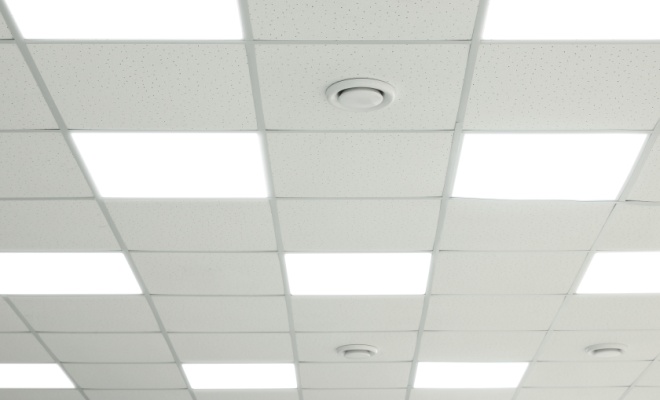
Next, metal ceiling tiles cost more than plastic, as the material is more premium. The entry-level metal ceiling tile costs £12 per tile. Mid-range is around £22 per tile, and high-end metal ceiling tiles can cost upwards of £30 per tile.
It’s important to note that prices will fluctuate depending on the exact materials and brand, with designer brands costing more than own-brand varieties. The larger your ceiling space, the higher your overall project costs will be.
Additional Costs
As always, the main project fee isn’t the only thing you’ll need to budget for–and suspended ceiling installation is no different. The construction, especially if it’s a retrofit installation, can throw up a whole host of other projects with associated costs.
Here’s what to be aware of when it comes to additional costs:
Special Features
One of the most common reasons for getting a suspended ceiling is to incorporate new lighting into the structure, either as spotlights or other integrated lighting. Installing new light fittings can cost a few hundred pounds, with the average installation time lasting one to four hours depending on the complexity, with electricians charging between £150 and £200 per day in labour.
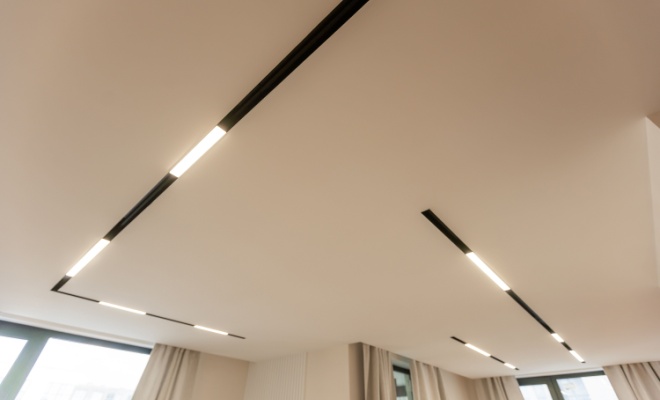
Moving light switches is a fairly simple job for an electrician taking around two hours and costing you between £100 and £150.
Custom Tiles
Depending on your installation, you may want to opt for specialised ceiling tiles. Perhaps you need something specific to suit an acoustic preference or other noise-absorbing function–this will bump up your prices if you’re having a ceiling tile manufactured, especially instead of buying off-the-shelf items.
Structural Changes
If you’re having your false ceiling retrofitted, you’ll need to enlist the help of a structural engineer to ensure the work is being carried out safely and within building regulations. Structural engineers can charge between £500 and £1,500 for a structural survey to tell you what you can and cannot do in your property, and they commonly charge around £90 per hour for other services–but costs do vary based on location, experience, and the scope of the project.
Potential Delays
Unfortunately, even the best-laid plans can go wrong–and extended labour hire charges can come up as a result of construction delays. If one moving part of your suspended ceiling installation goes off-kilter, it can throw off the entire project timeline. If you’re having specialist equipment or other machinery hired out, or even a skip, the extended loan will invariably cost you more than you initially budgeted for.
Making Good
Painting and decorating are unavoidable parts of suspended ceiling work. This can cost between £250 to £300 per room, depending on the size and the type of paint you’ve opted for. If necessary, you may also need to re-plaster the room, which can cost anywhere from £70 to £1,400, depending on the size and scope of the work.
Cost Breakdown Calculator
The total cost for a typical 10-foot by 12-foot suspended ceiling area (including structural survey): £2,500
Supply/Labour:
£1,500
Additional Costs (structural survey):
£1,000
Waste Removal:
0
Labour Costs and Time Frames
The time and labour charges for your false ceiling project will differ depending on its scope and complexity. They will also obviously differ for those taking it on as a DIY task instead of hiring contractors to carry out the work.
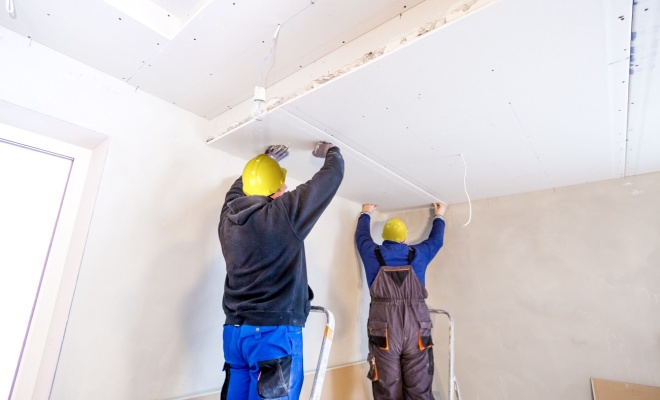
Typically speaking, a suspended ceiling specialist will charge between £150 to £200 per day. If you opt for a general labourer, their fees will be lower at £80 to £100 per day.
The factors affecting your project’s time frames and labour costs include:
- Accessibility: If ease of access is compromised, expect the job to cost more. This can be for things like higher-than-normal ceilings, which require more people to work on them and additional equipment to reach them.
- Existing ceiling condition: For retrofit installations, the state of your existing ceiling will play a part in determining your project timeframe. The more work your existing ceiling needs to be structurally sound will increase your time frame and labour costs accordingly.
- Location: Unfortunately, your geographical location is non-negotiable. If you are in the capital or southeast of the UK, expect to pay more than if you were based in the north, where labour fees are comparatively cheaper.
- More contractors, more fees: If your job requires a large team of tradespeople–such as those with large expansive ceilings or at height–your project’s labour fees will rise as the team size increases.
Types of Suspended Ceilings
As we’ve already mentioned, suspended ceilings come in a few different shapes and sizes. Let’s take a closer look at some of the different types of false ceilings, considering their advantages and disadvantages.
Plasterboard Suspended Ceiling
Known as the cheapest suspended ceiling material, plasterboard is a cost-effective choice for those on a tight budget.
Advantages of plasterboard suspended ceilings:
- ✔ Variety of design options, from textured to smooth finishes
- ✔ Cheap when compared to other materials
- ✔ Durable, less prone to damage than softer variations
- ✔ Good level of sound insulation
Disadvantages of plasterboard suspended ceilings:
- Can be tricker to install than other types
- Hard to repair as entire sections will need replacing instead of individual tiles
- Fairly heavy, needing a more robust framework
Mineral Fibre Suspended Ceiling Tiles
Mineral fibre tiles can come in a range of materials, from natural to synthetic and even recycled.
Advantages of mineral fibre suspended ceiling tiles:
- Great for sound absorption, as well as general energy insulation
- Cheap to buy
Disadvantages of mineral fibre suspended ceiling tiles:
- Heavier than other types of ceiling tiles, needing a more robust framework
- Can be prone to moisture-related damage
Plastic Suspended Ceiling Tiles
Cheap and cheerful, plastic ceiling tiles are good for budgets and ease of maintenance.
Advantages of plastic suspended ceiling tiles:
- Huge variety of designs and finishes
- Very cost-effective
- Easy to maintain and clean
- Lightweight
Disadvantages of plastic suspended ceiling tiles:
- Can look cheaper than other varieties, making them not as aesthetically-pleasing
- Not as environmentally friendly as other eco-friendly materials
Metal Suspended Ceiling Tiles
Lastly, metal suspended ceiling tiles offer a distinct style–but they come at a far higher cost.
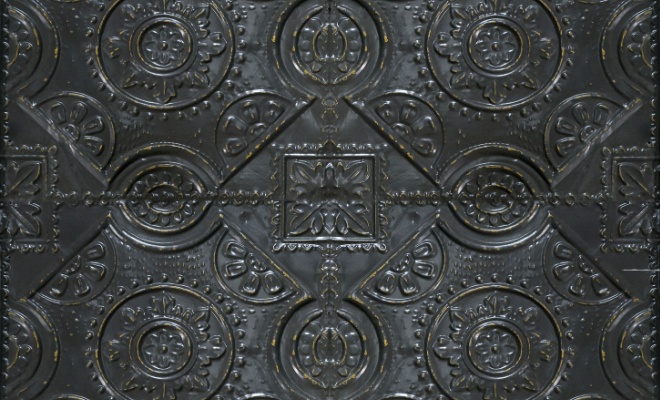
Advantages of metal suspended ceiling tiles:
- Durable, great for resisting moisture
- Low-maintenance
- Distinct aesthetic, with a variety of finishes from brushed to polished and painted
Disadvantages of metal suspended ceiling tiles:
- The aesthetic might not be to all tastes
- More expensive than plastic ceiling tiles
- More complex to install, leading to higher labour fees
Installation Steps
The installation steps will differ depending on the exact suspended ceiling you choose, but in general, your contractor is likely to take the following steps:
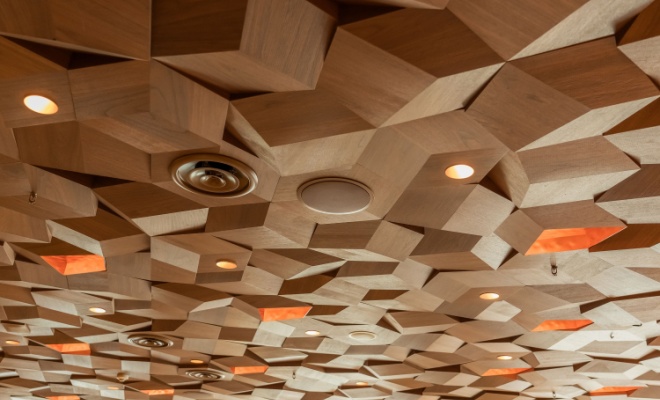
- Calculations and planning
Your contractor will begin by taking detailed dimensions of your chosen room(s). The important features to note are that the minimum ceiling height is seven feet and six inches; the ceiling must be at least three inches below any plumbing; and five inches below any lighting. - Install track supports
These will stretch along the perimeter of the walls, surrounding the area where the suspended ceiling will be. - Cut main tees to length and attach
Your contractor will then trim the main tees to the correct length before placing them onto the already installed track supports. Once cut, these can be hung from the joists and installed every four feet. - Insert the tabs
At this stage, the contractor will then insert the tabs of the four-foot cross tees in the associated slots on the main tees. - Add ceiling tiles and any optional extras
Once this is complete, the contractor can move on to add the actual ceiling tiles to the grid. Optional extras will be added at this stage, too, such as additional lighting or other features as required.
The installation process may look different for those with especially tricky installations, such as high ceilings or vast expanses, and extra considerations may need to be involved to get the job done.
DIY Installation
DIY suspended ceiling kits are available and can be used by DIY enthusiasts with relevant experience and know-how.
You’ll need the following equipment:
- Suspended ceiling kit
- Tape measure
- Spirit level
- Screwdriver/drill
- Stanley knife
- Pen/pencil
- Safety gear, including glasses/goggles, gloves and overalls
The steps will follow the same pattern as the installation listed above. It is only recommended that those who are competent with DIY and have experience in the field complete it. If you are unsure about the task or don’t feel comfortable completing the work, it’s best to enlist the help of a professional who can do the work efficiently and safely.
Compliance and Regulations
LABC Warranty tells us that the current code applicable to suspended ceilings in general and test methods is BS EN 13964. Certain specifications regarding humidity, external environment, and other “specialised conditions” such as weight and fire resistance are included.
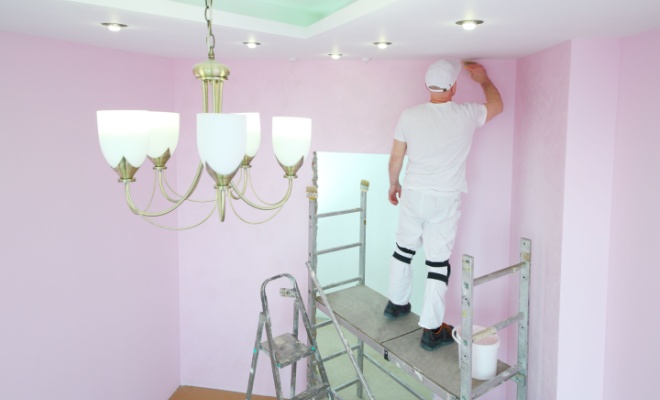
In terms of fire safety, in particular, the fire safety demands are said to vary depending on the room and building type. Ecophon states that:
- “Suspended ceilings must only make a negligible contribution to the fire development and to the production of smoke.”
- “Suspended ceilings must not break and collapse during the early stages of the fire when evacuation and rescue operations can still be carried out.”
In all cases, it’s best to enlist the help of a professional to survey your property and give you the best advice on what is and isn’t possible regarding building regulations and compliance to ensure you’re not going against any guidelines.
FAQs
Finding and Hiring a Professional
When the time comes to finally book your suspended ceiling specialist, after months of planning, your initial motive may be to hire the first trader you lay eyes on–but this isn’t the best course of action.
Look to seek out at least three different quotes from contractors to get a lay of the land and an idea of regional prices. Doing this will easily show up any outliers who may charge exponentially more or less for the same job, and both are a cause for concern, either in simply over-charging you or in under-charging you severely in the hopes of getting your booking secured, which could lead to a below-par experience for you if the traders aren’t as qualified as they say.
Ensure the quotation is itemised so you can easily understand what is and isn’t included in your trader’s fee. If there is anything you’re unsure about, be sure to ask at this stage–it’s far easier to do so before you’ve agreed on the contract than it is at the end of a project when you realise something is on the invoice that shouldn’t have been.
Take a look at the trader’s experience and qualifications–they should have experience on similar projects to yours, including the same type of false ceiling installation and materials. While much work will require on-site training, you can look for NVQs in Interior Systems as a level 2 or 3 qualification. Seeing if the trader has their Construction Skills Certification Scheme (CSCS) blue card is also a good indicator of their commitment to the industry, as this demonstrates sound health and safety understanding.
You can look at photos or videos of their past projects and read their customer reviews to get a feel for their work ethic and attitude. If you come across any instances of poor communication, failure to turn up, and missed deadlines, it’s best to stay away from that particular trader and continue your search for someone more reliable.
Sources
https://www.ceilingtilesuk.co.uk/how-much-do-suspended-ceilings-cost
https://ceilingdirect.co.uk/blog/suspended-ceiling-cost
https://ralphplastering.co.uk/suspended-ceiling-cost
https://www.ecophon.com/uk/about-ecophon/functional-demands/fire-safety
https://www.labcwarranty.co.uk/technical-blog/guidance-on-suspended-ceilings
https://www.uksuspendedceilings.co.uk/how-to/suspended-ceiling-installation









